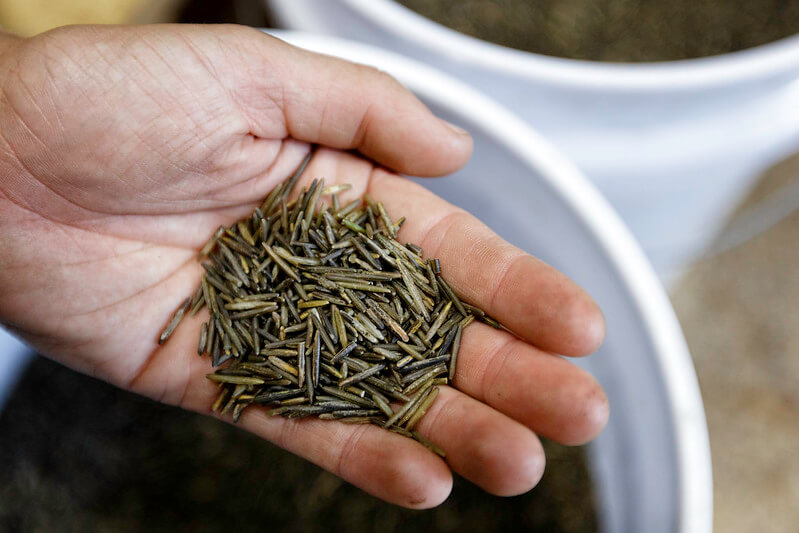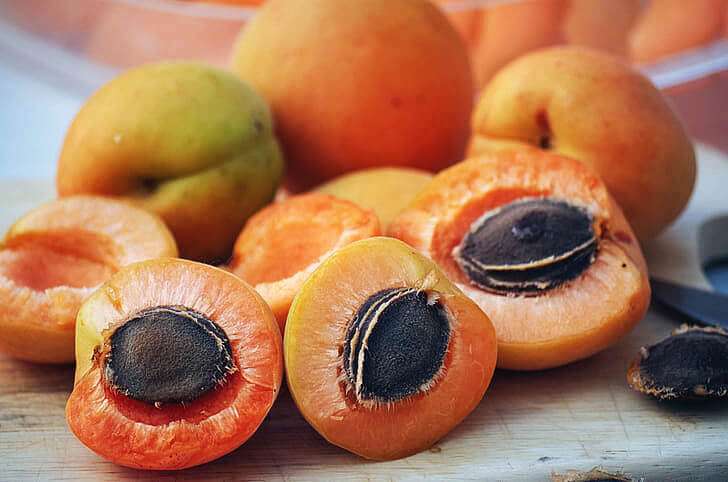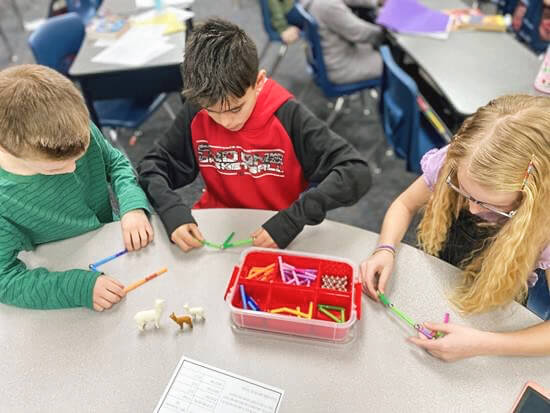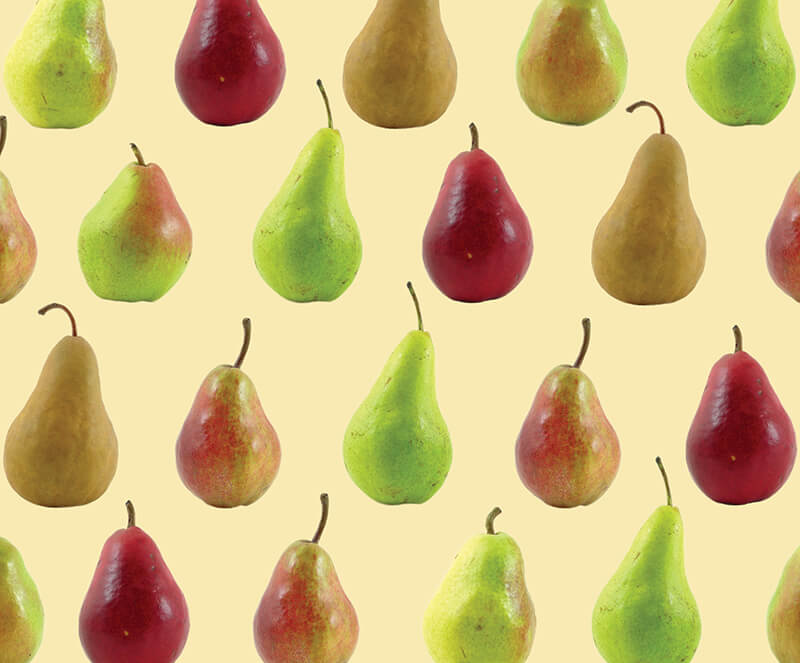Whipping Butter into Shape
Students investigate the physical change that occurs as milk is turned into butter.
Students investigate the physical change that occurs as milk is turned into butter.
Students identify the source of the food they eat and investigate the processes and people involved in getting food from the farm to their spoon.
Students identify the source of the food they eat and investigate the processes and people involved in getting food from the farm to their spoon.
Students determine that plants provide people with food, clothing, shelter, and many other things that we use in our daily lives.

Students explore the life cycle of wild rice, compare the steps of the traditional Native wild rice harvest with a cultivated wild rice harvest, and create their own wild rice bowls.
Students observe how earthworms speed the decomposition of organic matter and identify how this adds nutrients to the soil that are important for plant growth by constructing worm habitats from milk jugs.

This activity teaches students to identify different types of fruits and categorize them into two main groups based on whether they are dry or fleshy. Students will follow a worksheet and complete a lab assignment where they dissect various fruits.

Ag Challenge Task Cards can be used during soft/STEM start times, as a brain break, or as a fast finisher activity. Students simply read the cards and draw, build, or discuss the solution to an agricultural industry problem. This resource was developed by 2022 Excellence in Teaching About Agriculture Award winner, Meaghan Porritt.

Ag-Bites are bite-sized ways to bring agriculture into your classroom. These one-page sheets explain how to perform hands-on learning activities with students in various grade levels (K-12).

These fact sheets provide information on the history, production, top-producing regions and economic values of various agricultural products and natural resources. The activity sheets provide specific lesson ideas and fun facts for each topic. Commodities include agricultural water, alfalfa, almonds, artichokes, asparagus, avocados, beef, cantaloupes, carrots, citrus fruits, cling peaches, corn, cotton, cut flowers, dairy, dried plums, dry beans, forest resources, mushroom, pears, pistachios, nitrogen, phosphorus, potassium, processing tomato, rice, strawberries, table grapes, walnuts.
The crops we eat are constantly at risk of harm from pests. But what are these pests? In this activity, students will develop a definition of an agricultural pest that is meaningful to them and identify categories of pests such as insects, rodents, mollusks, weeds, and diseases.
This activity prepares students to interview someone in an agricultural career. Students will gain a greater awareness of the role agriculture plays in the American economy, practice oral and written communication skills, and learn about numerous agricultural careers.